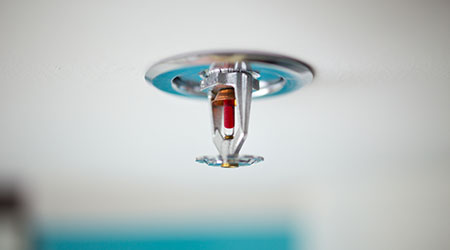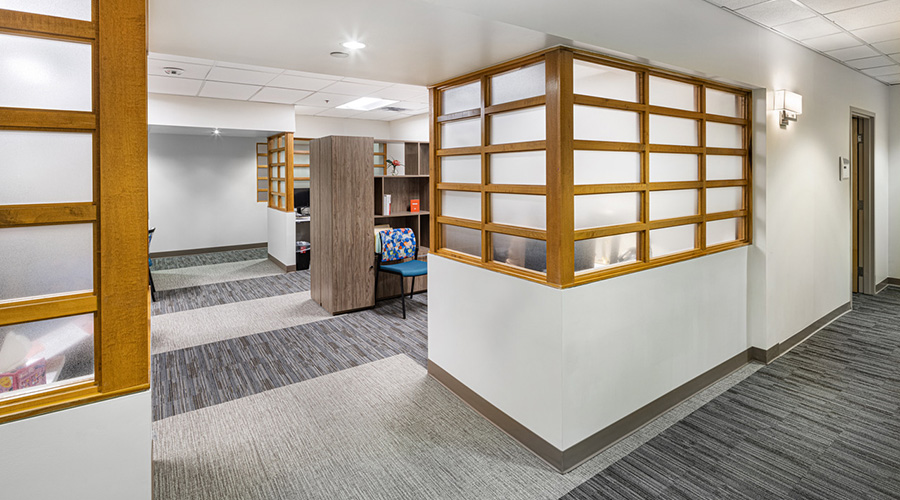The era of “smart buildings” is here, bringing new opportunities for significant gains in efficiency, safety and environmental protection. In a recent Q&A, Rodger Reiswig, director of industry relations at Johnson Controls Global Fire Protection Products, offered his insights into the impact of smart buildings on fire detection and what it means for organizations planning new facilities.
How do you define smart buildings?
Reiswig: The term “smart buildings” means different things to different people. For some, it’s all about the Green Initiative. Is the building able to sustain itself or reduce its carbon footprint? Can they reuse some of their water or generate electricity from onsite solar cells or wind turbines?
Another definition of “smart buildings” is based on sensors. Is the building smart enough to know that, if I’m the first person there in the morning and I swipe my card, it should switch the HVAC system into occupied mode? Can it start to turn the lights on? Can it adjust the window shades to allow the sun to come in? Can it call the elevator down for me because it knows that I’m in the lobby and I’m going to the tenth floor?
It’s all about how the systems integrate with one another, not just providing information to each other, but also interacting with one another, causing things to happen from one system to another.
How close are we to the vision of an integrated intelligent building where all the systems work together to maximize efficiency and safety and cost savings?
Reiswig: We’ve already been doing some integration for a few years now with things like HVAC and lighting. Now we’re seeing tighter integration where, for example, we can use the position of the sun to get the best impact of sunlight to start to heat the building in the winter.
One of the biggest challenges that we see in the smart building environment is protocols or topologies for how one system talks to another. The fire alarm system uses a certain protocol or language. The HVAC system uses another protocol or language, and so on.
Creating an environment where systems can talk to one another and not just send, but also receive information – that’s the difficult part. Everybody can send information out. It’s easy for me to tell you what is happening in a system. But for you to tell me what’s happening in your system and then expect me to do something with that information, that’s when it gets a little bit harder.
What makes system-to-system communication challenging?
Reiswig: Because of the critical role they play in protecting lives and property, life safety systems require a level of reliability and resilience far beyond that of other building systems or networks. Therefore, we have to be extremely careful about how we allow information from other systems to come into the life safety system, in case that information should affect the performance of the system.
In addition, the design and specification of life safety systems is guided via three different means: building codes, standards and listings. Each of those means is controlled by different organizations. Any proposed changes to life safety networks have to pass muster with those entities, and that takes time, effort and consensus-building.
When we’re talking specifically about system-to-system communication, the listing entities, organizations like UL and FM Global, regulate how much information can come into any life safety system. The listing documents require that there be some type of a barrier or gateway to prevent unauthorized or corrupted information from coming into a fire alarm system, causing harm or causing it to lock up.
There are listed gateways that can accomplish this. For example, you could take a building automation system and a fire alarm system and get them UL-Listed together, allowing them to send information in both directions.
We will see all building technologies become more integrated over time as we work through the different entities and people begin to realize the benefits of improved safety, lower environmental impact, and reduced costs.
The internet of things is another factor in this, as more smart devices and intelligent sensors are being deployed in buildings. How will fire detection systems benefit from other sensor information available in a building?
Reiswig: One of the things being explored is occupancy sensors that tell where people are located in a building. Some type of telemetry could be used to understand where people are concentrated in a facility and, based on that, make the fire alarm system more or less sensitive to smoke. If a lot of people are congregating in one area, there might be more activity and more dust being stirred up.
You could use that information to set different alarm parameters compared to, for example, an empty building with no significant air movement. We see that type of operation happening. Knowing how many people are in a building and where they are located is also a critically valuable piece of information for first responders.
Here’s another example: Let’s say we have a big parking garage next to a mall. Cars come in, and perhaps some people leave their cars running, or the cars aren’t operating as efficiently as they should be. You could have carbon monoxide detectors and occupancy sensors in the garage, and when the garage becomes crowded and carbon monoxide levels start to rise a bit, you could tell the fire alarm system not to go into alarm, but instead to turn fans on to get some fresh air moving throughout the building. And so it’s performing a life safety function, but at a non-emergency level.
Are you involved in any cross-industry standard-setting organizations to enable better communication among building systems?
Reiswig: On an industry level, Johnson Controls is very active in the development of codes and standards. We have people who sit on committees for things like healthcare occupancy standards. We have engineers that contribute to product listing documents. We have people who participate in committees that determine how products should be installed and maintained. We’re even involved with groups, like the National Disabilities Rights Network, that advocate for laws that promote equal access and notification of life safety events. The list goes on.
Just to give you an example, there’s a standard called BACnet, Building Automation Control Network, which was developed by the American Society of Heating, Refrigerating and Air-Conditioning Engineers.
It’s a common protocol that allows all types of systems to get on the same communication platform and be able to send and possibly receive information, depending on the product and the type of system it is.
BACnet is based on entities, so within their system, they need to define what each entity is. What is a thermostat? What is a variable air box? What is a lighting controller? What is a fire alarm smoke detector? We work closely with this organization to create entities that can reside on their infrastructure so that, for example, the lightning system recognizes what a smoke detector is when they send that entity out to the network. It’s one of the most important methods we are using to communicate among dissimilar systems.
We’re working on two fronts: internally and industry-wide. We’re developing third-party interfaces that enable an outside entity to sign a non-disclosure form and get the keys to the kingdom, if you will, on our protocols for how our systems operate – the data stream that we can send out and receive back – allowing that third-party developer to create some of these interfaces themselves.
That has been one of our challenges, because we have always said that this is a fire alarm system, and if you want that type of an interface, we need to write it and get it listed. We had to step back and say, what if we developed a barrier gateway and allowed somebody else to develop the protocol and, done properly, became able to receive and send information to the fire alarm system? It’s like what Apple does with apps. We are going down that road with this third-party interface gateway.
Have these developments changed how you’re planning for the future development of fire detection systems?
Reiswig: Yes, they have. We are looking at how we can use these systems strategically to make life safety systems better. And life safety is becoming more nuanced, proactive and comprehensive. Can I communicate and use this information to unlock the door so people have a clear egress? Can I start to use the elevators to evacuate people during an emergency?
We’ve been told traditionally to use the stairwell and not the elevator in the event of a fire. But it takes a person about a minute a floor to get out. That’s a problem if you’re in an 80-story building. You have elevators sitting there. Is there something we could do to allow these elevators to be used to evacuate people? The American Society of Mechanical Engineers has been working hard on developing the language and requirements to do that. It’s just one example of how having systems integrated and talking to each other allows us to create smarter solutions that can help make facilities safer.
What advice would you give to building owners, architects, designers or contractors to help them start planning today for the future of smart buildings?
Reiswig: The most important thing is to build awareness. The average building owner doesn’t know that a lot of this technology even exists. So we need to inform them that there are options they can ask about. One of my recommendations would be to ask your design engineer. As you discuss the kind of windows you want, the kind of flooring and lighting and so on, ask how these systems could integrate together and what the benefits of integration would be. The bigger your facility, the greater the benefits of integrating these systems.
Another resource that people don’t use often enough is the AHJs, the authorities having jurisdiction. That’s the local fire marshal, the fire chief, the local first responders. Don’t be afraid to sit down with a fire marshal, tell them what kind of building you’re putting in, and ask them what would help them respond in the event of an emergency in that building. They’ll be glad you asked, because these people see a lot of different buildings and respond to emergencies every day.

 Code Compliance Isn't Enough for Healthcare Resilience
Code Compliance Isn't Enough for Healthcare Resilience Ribbon Cutting Marks First Phase Completion for New Montefiore Einstein Facility
Ribbon Cutting Marks First Phase Completion for New Montefiore Einstein Facility Brooks Rehabilitation Launches 3 New Major Construction Projects
Brooks Rehabilitation Launches 3 New Major Construction Projects Joint Commission Standards: What Updates Matter Most?
Joint Commission Standards: What Updates Matter Most? Swinerton Completes Construction at Atlanta's Grady Hospital
Swinerton Completes Construction at Atlanta's Grady Hospital